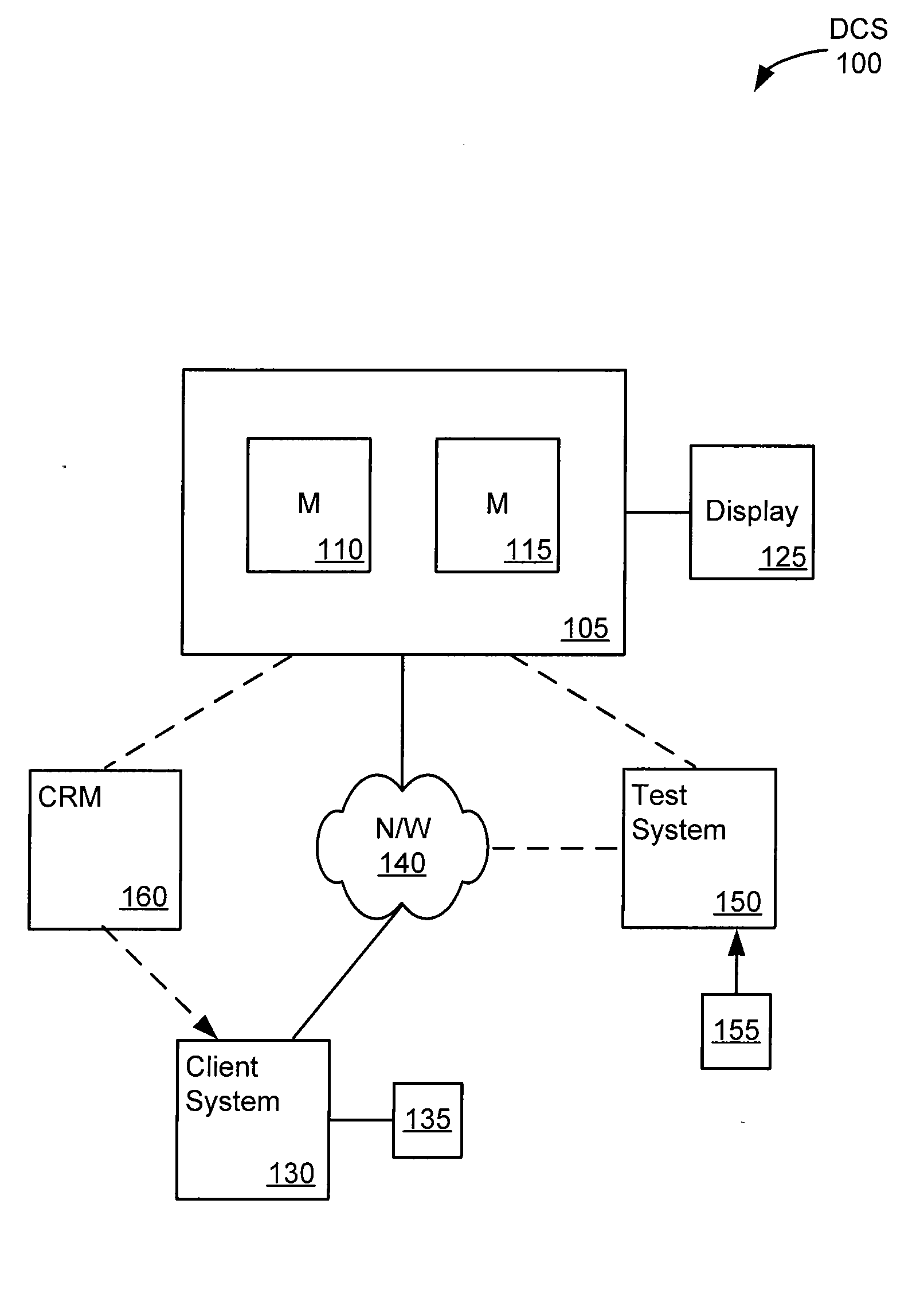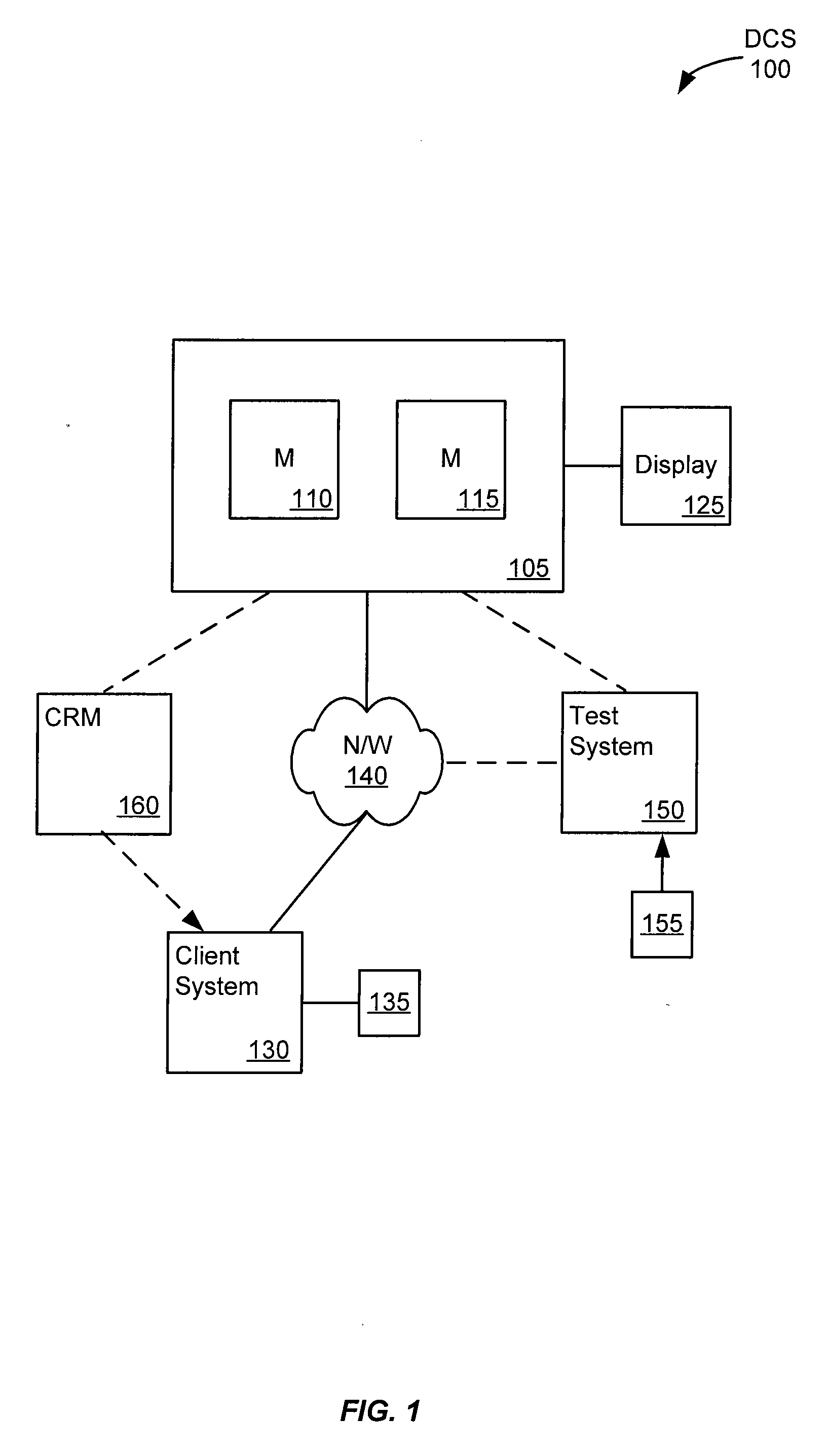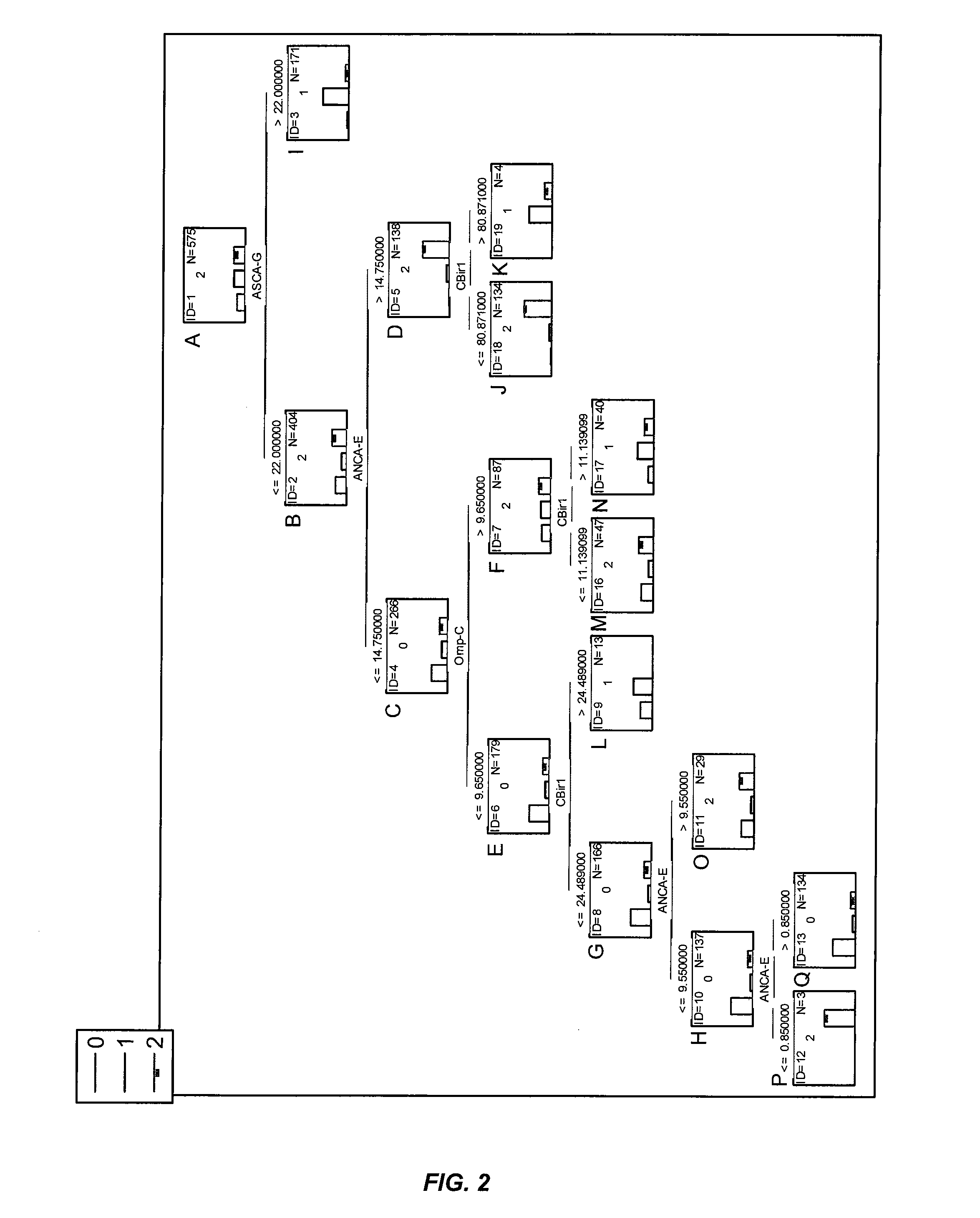Methods of diagnosing inflammatory bowel disease
a technology diagnostic methods, which is applied in the field of diagnostic methods of inflammatory bowel disease, can solve the problems of high medical cost, affecting the productivity of ibd and ibs, and affecting the quality of life of patients,
- Summary
- Abstract
- Description
- Claims
- Application Information
AI Technical Summary
Benefits of technology
Problems solved by technology
Method used
Image
Examples
example 1
Determination of ANCA Levels
[0182]This example illustrates an analysis of ANCA levels in a sample using an ELISA assay.
[0183]A fixed neutrophil enzyme-linked immunosorbent assay (ELISA) was used to detect ANCA as described in Saxon et al., J. Allergy Clin. Immunol., 86:202-210 (1990). Briefly, microtiter plates were coated with 2.5×105 neutrophils per well from peripheral human blood purified by Ficoll-hypaque centrifugation and treated with 100% methanol for 10 minutes to fix the cells. Cells were incubated with 0.25% bovine serum albumin (BSA) in phosphate-buffered saline to block nonspecific antibody binding for 60 minutes at room temperature in a humidified chamber. Next, control and coded sera were added at a 1:100 dilution to the bovine serum / phosphate-buffered saline blocking buffer and incubated for 60 minutes at room temperature in a humidified chamber. Alkaline phosphatase-conjugated goat F(ab′)2 anti-human immunoglobulin G antibody (γ-chain specific; Jackson Immunoresearc...
example 2
Determination of the Presence of pANCA
[0185]This example illustrates an analysis of the presence or absence of pANCA in a sample using an immunofluorescence assay as described, e.g., in U.S. Pat. Nos. 5,750,355 and 5,830,675. In particular, the presence of pANCA is detected by assaying for the loss of a positive value (e.g., loss of a detectable antibody marker and / or a specific cellular staining pattern as compared to a control) upon treatment of neutrophils with DNase.
[0186]Neutrophils isolated from a sample such as serum are immobilized on a glass side according to the following protocol:[0187]1. Resuspend neutrophils in a sufficient volume of 1× Hanks' Balanced Salt Solution (HBSS) to achieve about 2.5×106 cells per ml.[0188]2. Use a Cytospin3 centrifuge (Shandon, Inc.; Pittsburgh, Pa.) at 500 rpm for 5 minutes to apply 0.01 ml of the resuspended neutrophils to each slide.[0189]3. Fix neutrophils to slide by incubating slides for 10 minutes in sufficient volume of 100% methanol ...
example 3
Determination of ASCA Levels
[0202]This example illustrates the preparation of yeast cell well mannan and an analysis of ASCA levels in a sample using an ELISA assay.
[0203]Yeast cell wall mannan was prepared as described in Faille et al., Eur. J. Clin. Microbiol. Infect. Dis., 11:438-446 (1992) and in Kocourek et al., J. Bacteriol., 100:1175-1181 (1969). Briefly, a lyophilized pellet of yeast Saccharomyces uvarum was obtained from the American Type Culture Collection (#38926). Yeast were reconstituted in 10 ml 2×YT medium, prepared according to Sambrook et al., In “Molecular Cloning,” Cold Spring Harbor Laboratory Press (1989). S. uvarum were grown for two to three days at 30° C. The terminal S. uvarum culture was inoculated on a 2×YT agar plate and subsequently grown for two to three days at 30° C. A single colony was used to inoculate 500 ml 2×YT media, and grown for two to three days at 30° C. Fermentation media (pH 4.5) was prepared by adding 20 g glucose, 2 g bacto-yeast extract...
PUM
| Property | Measurement | Unit |
|---|---|---|
| OD | aaaaa | aaaaa |
| temperature | aaaaa | aaaaa |
| pH | aaaaa | aaaaa |
Abstract
Description
Claims
Application Information
 Login to View More
Login to View More - R&D
- Intellectual Property
- Life Sciences
- Materials
- Tech Scout
- Unparalleled Data Quality
- Higher Quality Content
- 60% Fewer Hallucinations
Browse by: Latest US Patents, China's latest patents, Technical Efficacy Thesaurus, Application Domain, Technology Topic, Popular Technical Reports.
© 2025 PatSnap. All rights reserved.Legal|Privacy policy|Modern Slavery Act Transparency Statement|Sitemap|About US| Contact US: help@patsnap.com



